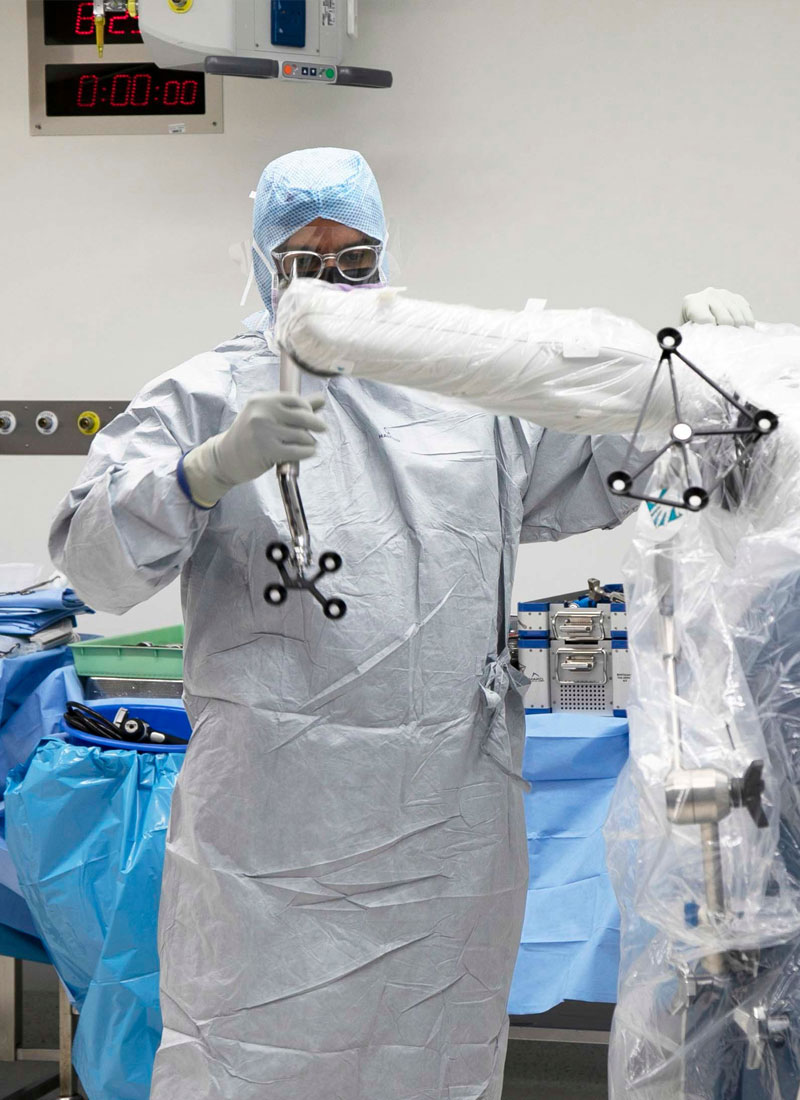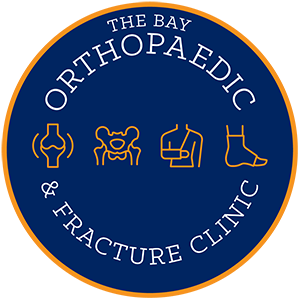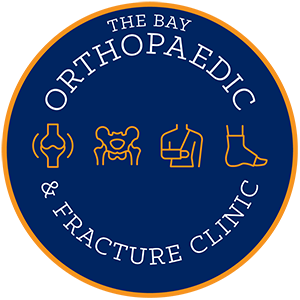Knee arthritis often worsens gradually and when it starts to stop you going for long walks, playing sports, or affecting your sleep, it’s worthwhile considering a joint replacement.
In the earlier stages we can consider a partial knee, but when the arthritis affects all the joint then a total knee replacement is a more reliable option.

Total Knee replacements are considered when knee pain is affecting your quality of life.
Knee replacements are constantly advancing in how we position them with the aim of giving patients the best long term results, and technology evolves to make sure we do this as accurately as possible.
Implant positioning must be linked in with the ligament balance of the knee to get the best outcome. In years gone by we used to put knee replacements in a standard set position for everyone, but now we are putting knee replacements in patient customised positions based on what the individual knee looked like before arthritis set in. This more modern kinematic functionally balanced alignment seems to be giving better results and a more balanced knee, which may lead to greater patient satisfaction.
To assist us in achieving ligament balance and accurate implant placement, we use modern technology with the Mako robot. Prior to surgery we get a CT scan to ensure we get a virtual 3 Dimensional model of your own personal knee, as well as its relationship to the centre of the hip and ankle, before planning custom virtual positioning of the joint replacement. During surgery we look at the preoperative plan and adjust it slightly depending on how tight or loose the ligaments are within the knee at various positions. We then make sure that only the essential bone is removed and the implants are positioned accurately with robotic guidance for the saw cuts. The haptic boundaries also mean that the saw cuts are constrained to only take away the bone required for the implants, with the aim of less damage to the soft tissues, and the potential of less postoperative pain and a quicker postoperative recovery.[1,2]
After surgery we would expect you to be in hospital 2-3 days, walking with crutches until weeks 2-3, a single stick for support until week 6, then walking without aids. Most of the discomfort and swelling will have resolved by week 4, but won’t completely settle until 3-4 months. Physio is important following a knee replacement to help you get your range of motion and for early reduction of swelling.
We have much more information to give you about robotic joint replacements!
If you wish to discuss this further please call the reception team on 07 4128 0736 and they’ll be happy to help.
© 2022-2024 The Bay Orthopaedic & Fracture Clinic | Privacy Policy | Disclaimer | Website design:



